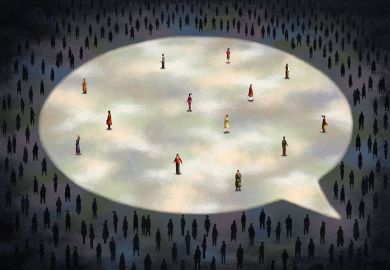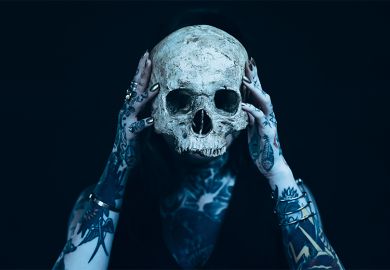On June 26 1814, the ardent 16-year-old Mary Wollstonecraft Godwin, standing over her mother's grave, declared her passionate feelings for the married 21-year-old firebrand poet Percy Bysshe Shelley. The next day the couple probably made love for the first time in a secluded corner of St Pancras churchyard. The rest of the story is familiar to most readers. A month later, Mary and Percy eloped to the continent with Mary's step-sister, Claire Clairmont, in tow. Two years after this, they travelled abroad again, to join Byron in Geneva, and it was there, during a stormy night of telling ghost stories, that Mary's idea of Frankenstein's monster was conceived. In December that year the news broke that Shelley's first wife, Harriet, had drowned herself in the Serpentine and Shelley and Mary hastily married two weeks later. They left for Italy for the final time in 1818 and four years later Shelley himself drowned off the coast of Lerici. Mary Shelley found herself, aged 24, a widow, the mother of one surviving child having suffered two miscarriages and three infant deaths, and a famous author.
Mary Shelley's life was really the stuff of fiction and indeed it has been fictionalised mercilessly in book and film, from Shelley's own The Last Man to Ken Russell's Gothic . It might seem that very little more can be said about the wild passions and vivid imaginations of the Shelley and Byron circle, but Miranda Seymour has succeeded in breathing new life into the old story, producing a biography that is both a gripping read and yet also judiciously level-headed.
In previous biographies of the Shelley circle, Mary has come in for rather a bad press, portrayed as the sensible, prudish conservative who tried to tame her husband's excesses and who critiqued romantic idealism in her novels. By seeing the story from Mary's perspective, Seymour challenges this view. The fact that Mary was always complaining about having to share a house with Claire, for example, was not so much due to her irritable and unaccommodating nature as it was prompted by Shelley's insensitivity. According to Seymour, Shelley probably slept with Claire on a trip to his father's house in Sussex in 1815, and when she disclosed her subsequent pregnancy to Mary about three months later, Mary was understandably upset and would not calm down until Claire was packed off to the country. Indeed, Seymour shows that Mary was repeatedly to suffer the effects of Shelley's roving eye during their marriage.
Seymour also reveals that Mary did not try initially to censor her husband's political opinions after his death or to gloss over the details of their elopement. While other friends such as Leigh Hunt brought out memoirs that suggested that Shelley had met Mary only after Harriet's death, Mary was anxious, when Cyrus Redding was compiling a memoir in 1829, to set the record straight and declare that she had lived with the poet for two years before their marriage.
Most intriguingly, Seymour argues that Frankenstein is not a reactionary novel that metaphorically dramatises, in the figure of the monster, the terrors of the French revolutionary mob, as is fairly widely believed by critics, but rather it is a pioneering anti-slavery novel. The prejudice of the monster's persecutors, who provoke it to be violent, was inspired by Mary's first-hand encounter with the horrors of the slave trade in Bristol in 1815, where, surrounded by a newly emancipated black population with bitter memories, she thought about "the plight of a seemingly non-human being, judged by his looks to be incapable of moral feelings or elevated sentiments".
Despite this foray into analysis of Frankenstein , however, this is not a literary biography. Critics and biographers have always worried about the connection between the life and work of a writer. Since the notorious "death of the author", should a literary biography interest us at all? How far should the biographer also take on the role of a critic? Recent practice has seen a sharp divide between life writers and literary critics, with even biographers trained as literary critics, such as Fred Kaplan, sticking strictly to daily events in the lives of their subjects.
Seymour is no exception to this trend, and the biography restricts itself, somewhat disappointingly, to a brief summary of the plots of the novels with one or two biographical influences upon each story suggested. Several of Mary Shelley's novels - Matilda and The Last Man - are heavily autobiographical anyway, and Seymour does well to disentangle the fact from the fiction in Mary's life and work. But a more thorough critical examination of her writing might have helped to explain the strenuous and, at times bewildering, intellectual activity in which she engaged throughout her life, even at times of the greatest emotional turmoil and grief.
Mary Shelley has always lived rather in the shadow of her charismatic husband, even within her own estimation. Seymour shows, for instance, that The Last Man was indebted to Shelley's poem "The Triumph of Life" for its dark vision. But Mary Shelley emerges from this biography as a dynamic figure in her own right. She continued to write and have adventures after she was widowed, for example, helping another woman to masquerade as a man and thus to escape to a liberated life in France. Her radical nature was not all the product of Shelley's tutoring; she was, rather, consistently the worthy daughter of William Godwin and Mary Wollstonecraft, the child of revolutionaries. Feminists, scholars, sceptics and romantics alike will enjoy this story.
Jennifer Wallace is a fellow of Peterhouse, Cambridge.
Mary Shelley
Author - Miranda Seymour
ISBN - 0 7195 5711 9
Publisher - John Murray
Price - £25.00
Pages - 655



